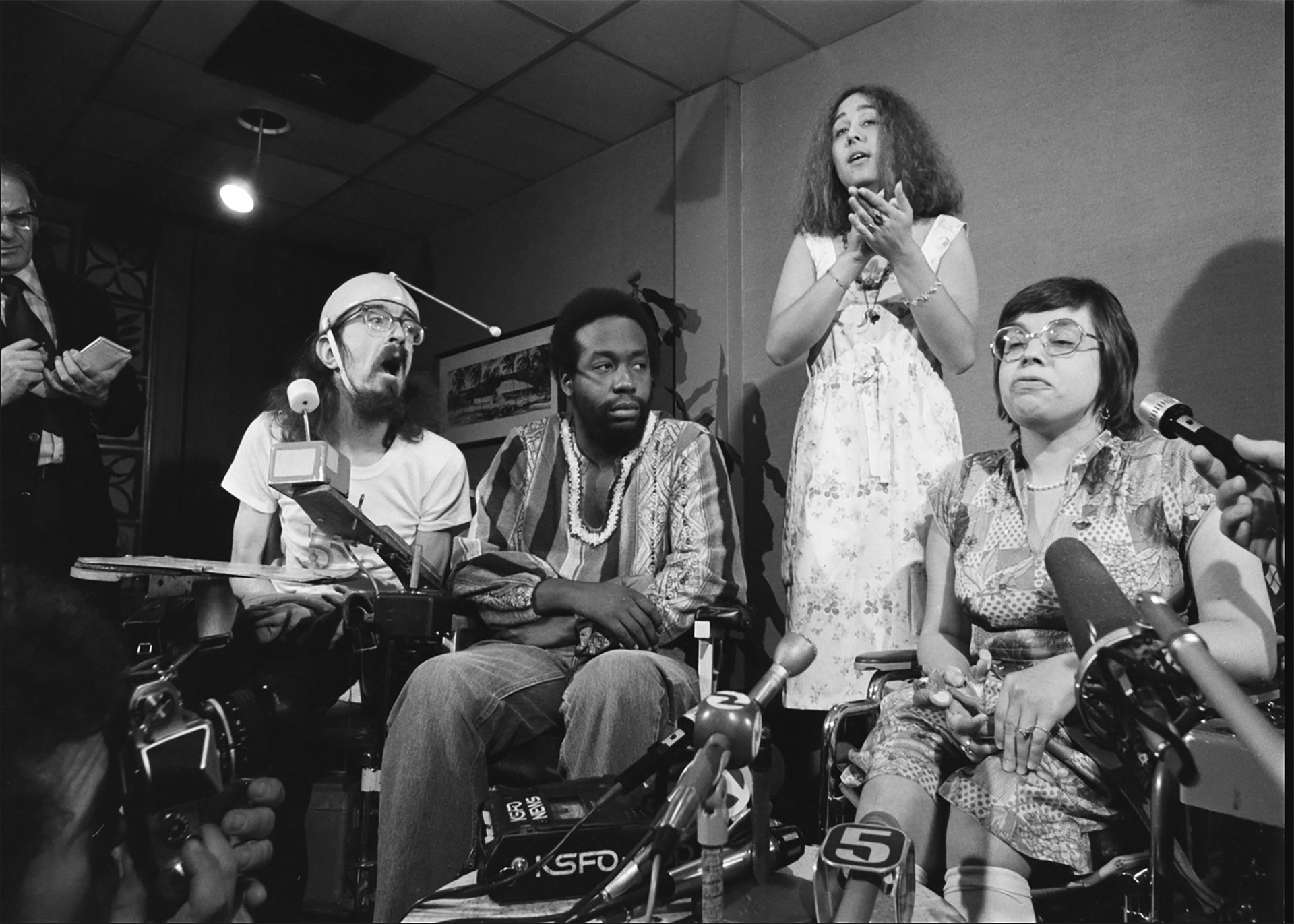Berkeley and Disability Rights
Our lab is proud to be part of a long tradition of disability rights advocacy and scholarship at UC Berkeley and the broader City of Berkeley community. The Disabled Students’ Program and disability rights movements at Cal were born out of student calls for justice in the 1960s and 70s. Taking inspiration from other civil rights movements at the time, activism, much of it originating from the Berkeley community, eventually led to the passage of the ADA Act in 1990 (Americans with Disabilities Act), as well as a thriving disabled community at Cal. To read more about this important history, visit this link: learn more about Berkeley and Disability Rights History. We also recommend the Oscar-nominated documentary “Crip Camp” (if you haven’t seen it yet!)

Key Events Timeline
Adapted from ABC-CLIO Companion to The Disability Rights Movement, by Fred Pelka. ABC-CLIO: Santa Barbara, 1997.
1962: Edward V. Roberts becomes the first severely disabled student at the University of California at Berkeley.
1963: John Hessler joins Ed Roberts at U.C. Berkeley, other disabled students follow. Together they form the Rolling Quads to advocate for greater access on campus and in the surrounding community.
1964: Passage of the Civil Rights Act outlawing discrimination on the basis of race in public accommodations, employment, and federally assisted programs. The Civil Rights Act of 1964 will become a model for subsequent disability rights legislation.
1968: The Architectural Barriers Act is passed, mandating that federally constructed buildings and facilities be accessible to people with physical disabilities. This is generally considered to be the first ever federal disability rights legislation.
1970: The Physically Disabled Students Program (PDSP) is founded by Ed Roberts, John Hessler, Hale Zukas and others at the University of California at Berkeley. With its provisions for community living, political advocacy, and personal assistance services, it becomes the nucleus for the first Center for Independent Living, founded two years later.
1972: The Center for Independent Living founded in Berkeley, California. Generally recognized as the world’s first independent living center, the formation of the CIL sparks the worldwide independent living movement.
1972: Demonstrations are held by disabled activists in Washington D.C. to protest the veto of what will become the Rehabilitation Act of 1973 by President Richard M. Nixon.
1973: Passage of the Rehabilitation Act of 1973 marks the greatest achievement of the disability rights movement thus far. The act— particularly Title V and especially Section 504,—for the first time confronts discrimination against people with disabilities. Section 504 prohibits programs receiving federal funds from discriminating against “otherwise qualified handicapped” individuals, and sparks the formation of “504 workshops” and numerous grassroots organizations. Disability rights activists seize on the Act as a powerful tool, and make the signing of regulations to implement Section 504 a top priority. Litigation arising out of Section 504 will generate such central disability rights concepts as “reasonable modification,” “reasonable accommodation,” and “undue burden,” which will form the framework for subsequent federal law, most especially the Americans with Disabilities Act of 1990.
1975: Edward Roberts becomes the Director of the California Department of Rehabilitation. He moves to establish nine independent living centers all across that state, based on the model of the original CIL in Berkeley. The success of these centers demonstrates that independent living can be replicated, and eventually results in the founding of hundreds of IL centers all over the world.
1979: The Disability Rights Education and Defense Fund (DREDF) is founded in Berkeley, California, becoming the nation’s preeminent disability rights legal advocacy center, participating in much of the landmark litigation and lobbying of the 1980s and 1990s.
1983: Ed Roberts, Judy Heumann, and Joan Leon found the World Institute on Disability in Oakland, California
1990: The Americans with Disabilities Act is signed by President George Bush on July 26 in a ceremony on the White House lawn witnessed by thousands of disability rights activists. The law is the most sweeping disability rights legislation in history, for the first time bringing full legal citizenship to Americans with disabilities. It mandates that local, state and federal governments and programs be accessible, that businesses with more than 15 employees make “reasonable accommodations” for disabled workers, that public accommodations such as restaurants and stores make “reasonable modifications” to ensure access for disabled members of the public. The act also mandates access in public transportation, communication, and in other areas of public life.
